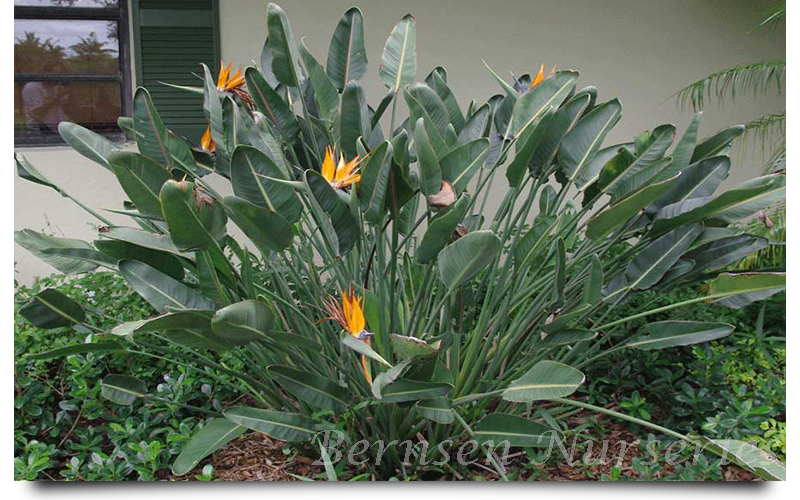ORANGE BIRD OF PARADISE
If ever a single plant could symbolize our exotic, sub-tropical locale, it would be this one. Orange Bird of Paradise grows in a clumping form with thick, gray-green leaves on graceful, upright stems. It makes an outstanding tropical accent, working well in formal landscapes or more casual designs.
This showy plant should be used as a focal point in the landscape, where it can show off its unusual form and beauty. Its overall mature height fits any size yard (the white bird of paradise is much larger, growing to 25 feet) and the flowers appear on and off all year, more during warm months.
Plant Specs: Orange bird of paradise will grow in full sun but seems happiest in part sun or part shade. The plants do best in Zone 10, but can be container grown in Zone 9B and moved indoors when cold snaps hit. They're slow growers to about 4 to 6 feet tall and wide, and are considered deer-resistant (though we make no promises).
Plant Spacing: Place these plants at least 3 feet apart give it enough room to fan out as it matures. The flowers tend to appear more on outer stems, so don't overcrowd it with other shrubs. If placing by a walk or drive, come in about 4 or 5 feet. These "birds" make excellent container plants.
Plant Care: Add top soil or organic peat moss to the hole when you plant. You can also add composted cow manure to enrich the soil around the plant's roots. No trimming is necessary other than to remove any browned leaves and stems.
These plants are drought-tolerant, but do best with regular irrigation and enough time between watering for it to dry out. Never place a bird of paradise in an area that doesn't drain well, and for shadier locations that hold moisture longer, check the soil before watering to get your irrigation timed just right. Orange birds are heavy feeders, so begin fertilizing a month after planting.
Apply a good granular fertilizer in spring, summer and autumn, supplemented with bone meal and liquid fertilizer for best results. Avoid mulching right up to the plant (this goes for any plant, for that matter) to avoid stem rot.

